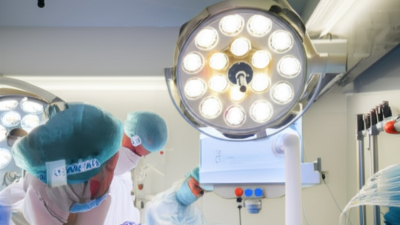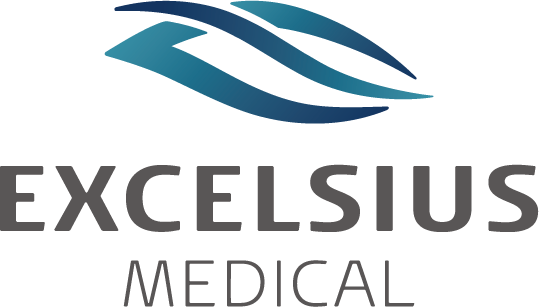Exploring the Unique Features and Applications of Various Types of Best Medical Lights
In the ever-evolving landscape of healthcare, the importance of illumination cannot be underestimated, particularly when it comes to medical procedures and examinations. Medical lights play a crucial role in ensuring optimal visibility, safety, and precision during surgeries and diagnostics. As technology advances, the variety of medical lights available in the market continues to grow, each designed with unique features and applications tailored to specific medical needs. From LED surgical lights with adjustable intensity to examination lights that offer convenient portability, understanding the best options suitable for various settings is essential for healthcare professionals. In this blog, we will explore the distinct characteristics of different types of medical lights, along with valuable tips on how to select the most effective lighting solutions for any medical environment. Whether you're a seasoned practitioner or a new entrant in the medical field, this guide aims to shed light on the best practices when it comes to harnessing the power of medical lights for enhanced patient care.

Understanding Different Types of Medical Lights and Their Specific Uses in Healthcare Settings
In healthcare settings, various types of medical lights are tailored to meet specific needs, ensuring optimal visibility and enhancing procedural efficiency. Surgical lights, often used in operating rooms, offer bright, shadow-free illumination, crucial for precision during intricate procedures. These lights typically feature adjustable brightness and color temperatures, allowing surgeons to customize lighting according to the surgical environment.
Another essential type of medical lighting is the examination light, which provides sufficient illumination for routine check-ups and diagnostic procedures. These lights are designed to be movable and flexible, enabling healthcare professionals to direct light precisely where it's needed.
In addition, portable LED lights have gained popularity due to their versatility and energy efficiency, making them ideal for home care settings, emergency situations, or locations without fixed installations. Each type of medical light plays a vital role in enhancing patient care, demonstrating the importance of selecting the right lighting for various healthcare applications.
Key Features that Differentiate Surgical Lights from Examination Lights in Medical Facilities
In medical facilities, understanding the differences between surgical lights and examination lights is crucial for enhancing both clinical outcomes and patient experiences. Surgical lights are designed to provide bright, focused illumination that minimizes shadows and maximizes visibility during procedures. They often feature adjustable intensities and color temperature controls that allow surgeons to optimize lighting conditions based on the specific needs of the operation. This precision in lighting not only aids in surgical tasks but also significantly reduces the risk of medical errors, thus improving overall patient safety.
Conversely, examination lights are typically used in outpatient settings and clinics for diagnosing and treating patients. These lights are generally less intense but are designed to provide adequate lighting for detailed examinations. Recent advancements in medical lighting technology emphasize the importance of LED systems, which deliver consistent lighting quality while increasing energy efficiency. Furthermore, studies indicate that well-designed lighting can positively impact patients’ sleep patterns and overall comfort, illustrating that the right lighting contributes to enhanced healing environments. As the medical lighting market continues to evolve, the focus on evidence-based designs will play a pivotal role in shaping the future of healthcare environments.
Exploring the Unique Features and Applications of Various Types of Best Medical Lights
| Type of Medical Light | Key Features | Primary Applications | Typical Light Source |
|---|---|---|---|
| Surgical Lights | High intensity, adjustable focus, shadow-free illumination | Operating rooms, surgical procedures | LED, halogen |
| Examination Lights | Portable, flexible positioning, lower intensity | Patient examinations, minor procedures | LED, fluorescent |
| Dental Lights | Bright, focused beam, color temperature adjustment | Dental procedures, check-ups | LED, halogen |
| Portable Lights | Lightweight, battery-operated, adjustable brightness | Emergency situations, outdoor use | LED |
| Endoscopy Lights | High illumination, fiber optic transmission | Endoscopic examinations and surgeries | LED |
The Role of LED Technology in Enhancing Medical Lighting Efficiency and Safety
The advent of LED technology has significantly transformed the landscape of medical lighting, enhancing both efficiency and safety. Studies indicate that LED lights consume up to 75% less energy compared to traditional incandescent bulbs, meaning hospitals can reduce operating costs while minimizing their carbon footprint. Furthermore, the longevity of LED lights—lasting up to 50,000 hours—reduces the frequency of replacements, ensuring that healthcare facilities maintain optimal illumination with less disruption.
In surgical and examination settings, precise lighting is crucial. LED technology provides consistent color temperature and brightness, critical for accurate diagnoses and procedures. According to a report from the Journal of Healthcare Engineering, the implementation of LED surgical lights can improve visibility by 30% compared to older technologies, elevating the quality of patient care.
**Tip**: When choosing medical lighting solutions, consider those with adjustable brightness and color temperatures to cater to a variety of clinical needs while ensuring comfort for both patients and healthcare professionals.
Another advantage of LED medical lighting is on safety. They emit less heat, minimizing the risk of burns in sensitive surgical environments. Furthermore, the strict adherence to regulations regarding glare and light distribution ensures that surgical teams can operate without visual impairment.
**Tip**: Regular maintenance and proper installation of LED medical lights can further enhance safety measures, ensuring that lighting remains effective and compliant with industry standards.
Efficiency and Safety of Medical Lighting Technologies
Evaluating the Impact of Proper Lighting on Patient Outcomes and Surgical Precision
Proper lighting in medical environments plays a crucial role in influencing patient outcomes and enhancing surgical precision. Surgeons and medical professionals rely on high-quality lighting to accurately visualize anatomy during procedures. The ability to distinguish fine details and true colors can drastically reduce the risk of errors, ensuring that interventions are both effective and safe. When the surgical field is illuminated correctly, it allows for a clearer view, which can lead to more successful outcomes and shorter recovery times for patients.
In addition to aiding surgeons, appropriate medical lighting can also positively impact patient safety. Well-lit examination and treatment rooms create a more inviting atmosphere, reducing anxiety and fostering trust. Moreover, proper lighting can help healthcare providers detect potential hazards, such as spills or obstacles, that could jeopardize patient safety. The integration of advanced lighting technology, such as adjustable brightness and color temperature, allows medical professionals to customize lighting conditions based on specific procedural requirements, ultimately contributing to better care and improved patient satisfaction.
Innovative Applications of Fiber Optic Illumination in Modern Medical Procedures
In the realm of modern medicine, fiber optic illumination has emerged as a transformative technology that enhances precision during procedures. This cutting-edge lighting method utilizes thin strands of glass or plastic to transmit light, providing bright and focused illumination even in the most constrained spaces. The key advantage of fiber optic lighting is its versatility, making it ideal for various applications such as endoscopy, surgical lighting, and even dental procedures. As medical professionals strive for greater accuracy, fiber optic systems contribute significantly to improving patient outcomes.
Tip: When selecting fiber optic lights for surgeries, consider the color temperature and brightness levels. Equipment with adjustable settings allows for customization based on specific procedural needs, ensuring optimal visibility without causing eye strain for practitioners.
In addition to its traditional uses, fiber optic technology is finding innovative applications in robotic-assisted surgeries. The flexibility of the fibers allows surgeons to manipulate light sources with precise control, enhancing visibility even in intricate areas like the abdominal cavity. As the field of minimally invasive surgery grows, the role of fiber optic illumination becomes even more critical, paving the way for safer and more effective surgical practices.
Tip: Regular maintenance of fiber optic equipment is essential. Ensure that the light sources are checked for compatibility, and clean the fibers to avoid any obstructions that could diminish light quality during procedures.
© 2025 EXCELSIUS MEDICAL All rights reserved
EXCELSIUS MEDICAL
Taiwan Office
2F., No. 18, Ln.31, Sec.1, Huandong Rd.,
Xinshi Dist., Tainan City 744, Taiwan, R.O.C.
German Office
Zeppelinstr. 4, Haus 3&4,
D-85399 Hallbergmoos, Germany
